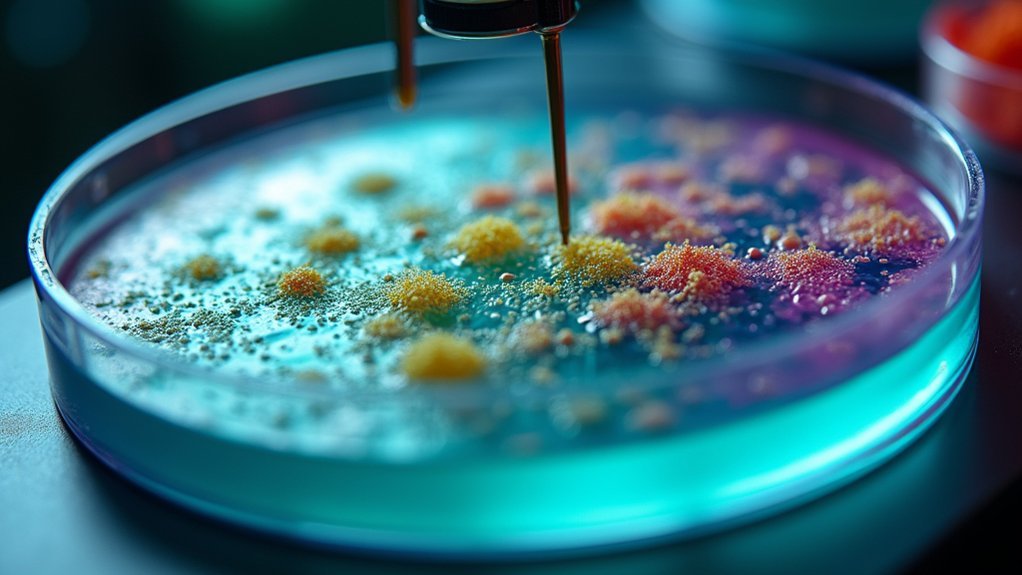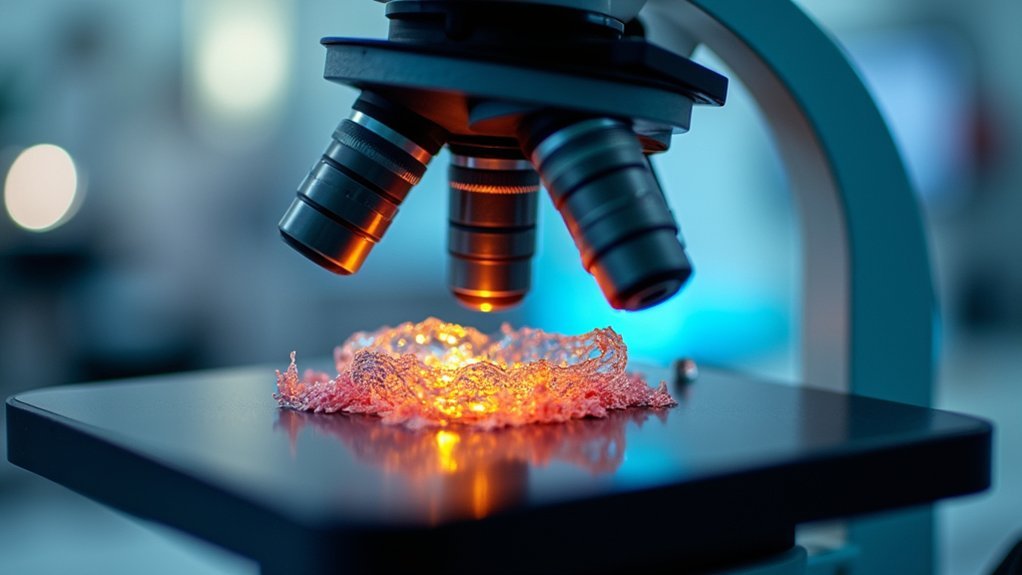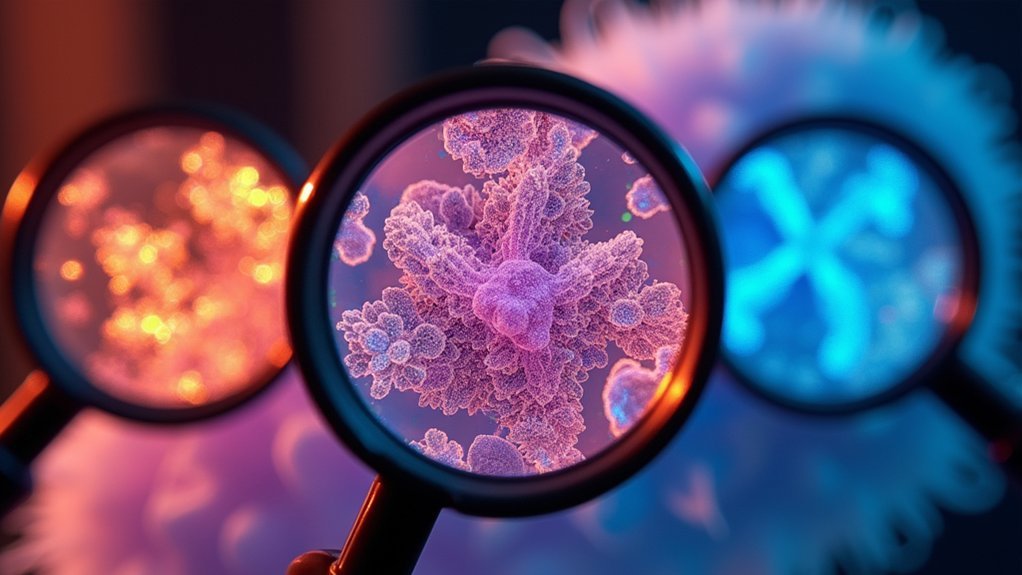For ideal brightfield microscopy, first target 50-75% of your camera’s dynamic range to maximize detail without pixel saturation. Second, use stable LED illumination with consistent white-referencing to guarantee uniform brightness across all samples. Third, balance exposure times to protect living specimens while maintaining essential details—shorter exposures reduce phototoxicity without compromising image quality. These settings will transform your microscopy results from acceptable to exceptional with every slide you examine.
Optimizing Dynamic Range Without Pixel Saturation

While capturing high-quality brightfield microscopy images requires attention to multiple factors, properly setting your exposure time is paramount.
You’ll achieve ideal image quality by targeting 50-75% of your camera’s dynamic range, which prevents pixel saturation while maximizing detail.
Use your imaging software to monitor pixel intensity during image acquisition, adjusting exposure time based on your brightest biological samples.
Monitor pixel intensities throughout acquisition, adjusting exposure based on your brightest sample regions to optimize image quality.
Unlike fluorescence microscopy, brightfield requires careful camera settings to balance contrast without losing information.
Check histograms regularly—they shouldn’t show clipping on the right side, which indicates saturation.
For consistent results, calibrate your microscope setup regularly and be prepared to experiment with exposure times for unevenly stained specimens.
This systematic enhancement approach guarantees your brightfield images maintain full dynamic range while preserving critical details in your samples.
Achieving Consistent Illumination Across Sample Comparisons
Maintaining consistent illumination becomes the next challenge after enhancing dynamic range in brightfield microscopy. You’ll need stable LED light sources to guarantee exposure times remain comparable across your sample set.
Monitor your microscope cameras regularly and replace aging bulbs to maintain uniform brightness in every digital image.
Implement white-referencing techniques to correct uneven illumination patterns that could skew intensity values between control and treated samples. Aim to utilize 50-75% of your camera’s dynamic range for ideal signal to noise ratio without risking saturation.
During image acquisition, check your histogram frequently to verify that all samples fall within similar exposure parameters.
These consistent acquisition settings guarantee that any measured differences between samples reflect true biological variation rather than technical inconsistencies in your imaging setup.
Balancing Exposure Time With Biological Sample Preservation

Finding the ideal exposure time requires delicate balancing when working with living specimens under brightfield conditions.
You’ll want to optimize exposure settings to utilize 50-75% of your camera’s dynamic range without causing pixel saturation. This sweet spot guarantees adequate brightness while preserving biological samples during image acquisition.
Remember that longer exposures may increase image quality but can trigger phototoxicity in live cell imaging.
Always prioritize shorter exposure times that still capture essential details without compromising specimen health. Monitor histogram data during your sessions to avoid both under and overexposure.
Balance brevity and detail—shorter exposures protect specimens while histogram monitoring ensures optimal image quality.
For meaningful comparative analysis between treated and control samples, maintain consistent exposure settings throughout your experiments.
This consistency guarantees that any observed differences reflect actual biological changes rather than variations in imaging parameters.
Frequently Asked Questions
What Determines the Correct Exposure Time Needed to Take a Digital Image?
The correct exposure time for your digital image is primarily determined by your sample’s brightness. You’ll need longer exposures for brighter samples to maximize dynamic range without saturating pixels.
What Is the Exposure Time for GFP?
For GFP imaging, you’ll typically need exposure times between 500ms and 2 seconds. You should adjust based on your excitation light intensity and avoid pixel saturation while maximizing signal-to-noise ratio for ideal results.
What Is the Exposure Time for a Camera?
Exposure time for your camera varies based on lighting conditions and desired outcome. You’ll need to adjust it from fractions of a second to several seconds depending on available light and creative intent.
What Is the Exposure Time for Fluorescence Microscopy?
In fluorescence microscopy, you’ll need to optimize exposure time based on your brightest signal. You should choose a duration that maximizes dynamic range without causing pixel saturation, photobleaching, or phototoxicity in your samples.
In Summary
You’ll get the most from your brightfield microscope by properly managing exposure settings. Optimize dynamic range while avoiding pixel saturation, maintain consistent illumination when comparing samples, and carefully balance exposure time to preserve delicate biological specimens. These three approaches won’t just improve your image quality—they’ll guarantee your data remains reliable and your samples stay viable throughout your imaging sessions.





Leave a Reply